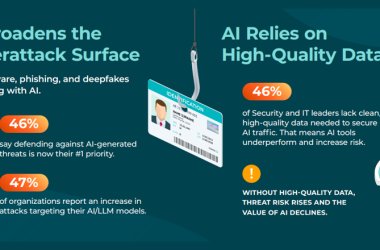Riverbed’s regional vice president for the Middle East, Turkey and North Africa Elie Dib gives his take on the top issues that CIOs should expect to face over the next 12 months.

The financial sector – moving away from legacy
The financial sector has had a tough time with its digital transformation. In 2018, financial institutions have been riddled with layers of legacy software, making changes to their infrastructure a delicate and costly operation that was rarely risk-free. Financial organisations need to move away from legacy and adopt a more agile infrastructure by partnering with financial technology startups.
In 2018, as banks and financial institutions double down on digital services, and try to make themselves more competitive with the use of highly agile Fintech, it will be crucial that they offer a satisfactory and seamless customer experience. In order to do so, better visibility and performance will be required — even on the edge of the network. The financial services sector will have to adopt SD-WAN and visibility solutions to monitor performance, quickly bring products to market and adapt services to support the move from legacy to agility.
IoT
The coming year will be one of massive change for IoT as manufacturers will continue to improve much-needed built-in security they had previously sacrificed to keep production costs low. As the general public is not yet fully aware of the security risks of IoT devices, there will be no massive dip in IoT adoption, even if the new security measures lift IoT prices up.
At the same time, very publicised data breaches and the implementation of GDPR will continue to create a shift in attitudes about IoT. This will take the form of a wake-up call and the realisation that there is no quick fix to security breaches. As organisations realise that avoiding IoT breaches is a tall order, and that the burden of proof of GDPR compliance falls on them, most businesses will try to mitigate the number of possible fines.
On the positive side, the challenges IoT is facing require innovative solutions and may lead to further developments that will help to combat future threats and give other technologies such as machine learning a boost.
Outages and digital resilience
Outages will continue to plague all industries, especially the financial and retail sectors. Businesses need to have more visibility. They will require a single source of truth over their software architecture. Digital visibility tools can provide the equivalent of an MRI diagnosing the whole software architecture or parts of it and potentially finding vulnerabilities before incidents occur.
Once businesses have improved their overall visibility, they will be able to take more pertinent and relevant steps to proactively improve their resilience and ensure that customers will be less affected by IT outages in the upcoming years than they were in 2018.
Skills gap
Data science talent will remain scarce in 2019, and the demand for data scientists and data analysts will continue to increase. As data lakes get larger and larger, the challenge of managing and leveraging huge amounts of data will become crucial to business operations, to the point of becoming the main point of focus of business development and planning.
In the upcoming year, organisations will become fully aware of the impact data has on overarching success and understanding customers. Technologies like artificial intelligence and machine learning will be able to provide actionable insights, while analytics will become key for organisations that are looking for an edge in a competitive market, and seeking to satisfy increasingly demanding digital customers. The talent to efficiently leverage these insights and to analyse the data will become invaluable.
These new technologies are bringing up another challenge for managers: how to educate the business on data analytics. Beyond the technical skills needed, the business skills to understand the technology required to do the job and how to implement it to get maximum performance will be key. In order to obtain these skills, companies might try to upskill employees, but only if there is a likely return on investment. As it is easier for businesses to hire outside the organisation, the struggle for data analytics will very likely intensify in the upcoming year.
Performance monitoring
Businesses are only now beginning to realise the importance of understanding their customers’ and their prospects’ digital footprint. As such, in 2019, data science and predictive analytics will become the main drivers of customer success.
AI and ML applications will multiply, gathering a significant amount of data that will require a detailed understanding of these applications. The superficial understanding we are seeing at the moment prevents organisations from delivering a truly seamless and optimal customer experience. This will not be the case in the upcoming year: data science techniques and predictive analytics will become much more mainstream in order to take full advantage of blooming technologies like ML.
Customer-centric businesses
Digital transformation was originally focused on the adoption of new technology solutions. However, in the coming year, this will start to evolve. As data science and data analytics capabilities expand, customers are beginning to demand and expect increasingly personalised services. From the package a telecoms company is offering, to a mortgage, clothing or simple grocery shopping, digital consumers expect goods and services to be specifically tailored to their tastes and personal experiences.
In the coming year, businesses that are able to offer consumers a tailored experience through the use of advanced data analytics, ML and AI will reap great benefits. The use of new technologies like blockchain will also help increase the level of personalisation.
CFOs and digital finance teams in collaboration:
Financial teams will have to drastically change and adapt in the upcoming year. The increasing appeal of financial technology companies for both customers and talent will require traditional banks to adapt and become more agile. As such, financial teams will need to develop better data analytics skills. Data scientists will become the key player of any financial team and predictive analytics, and AI and ML talent will become increasingly necessary in the financial world.
Furthermore, financial teams will continue to adapt in the upcoming year and CFOs in every company will rely more and more on data and analysts on their team. Consequently, CIOs and CFOs will work more closely than ever and the most successful companies won’t have siloed data.





